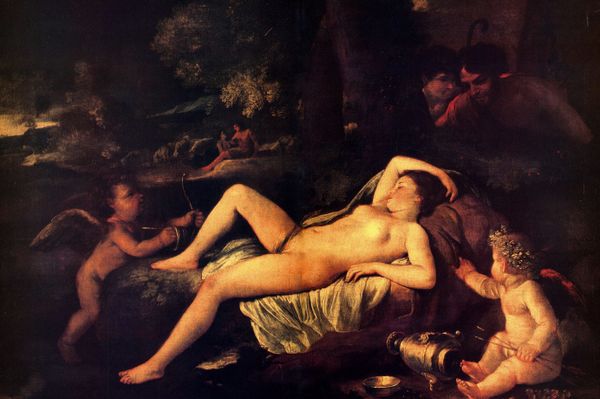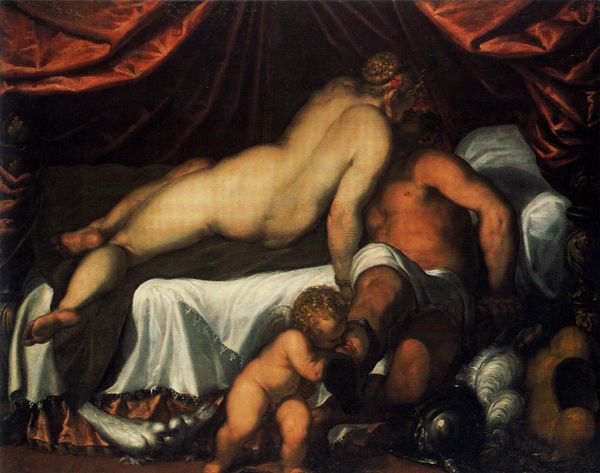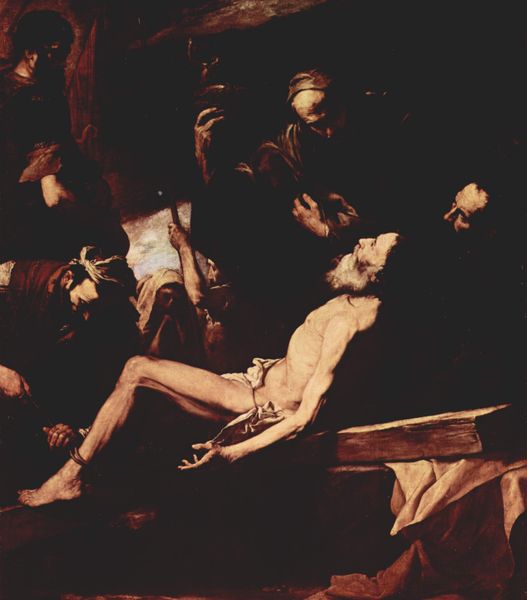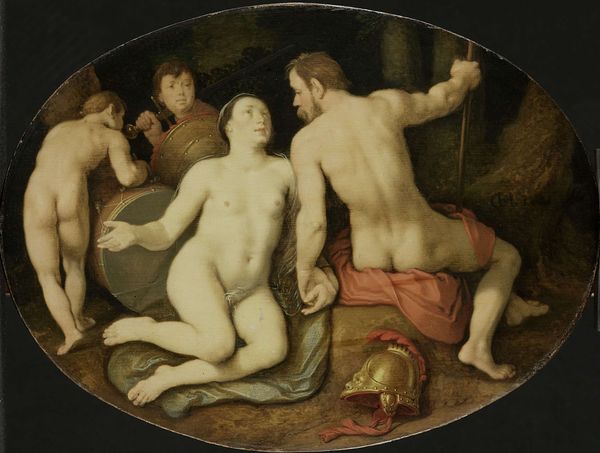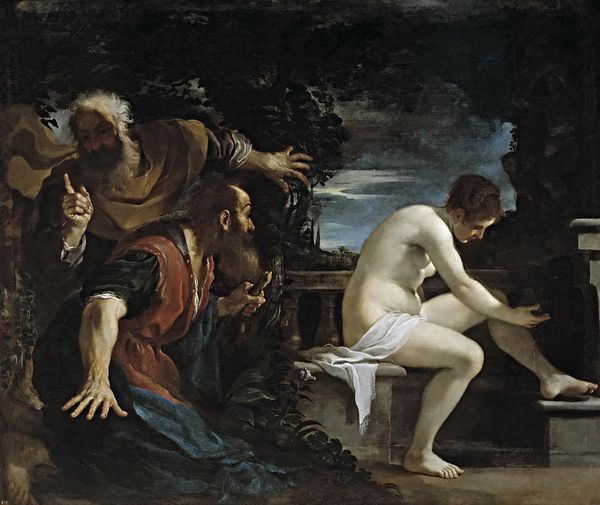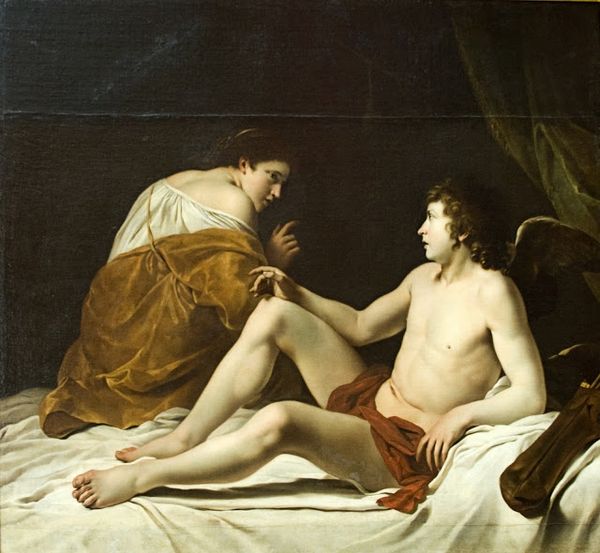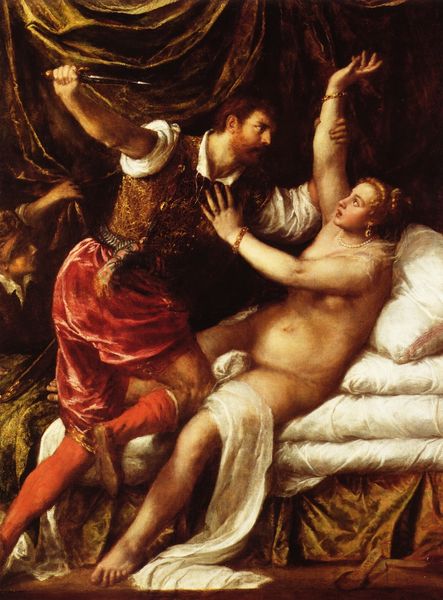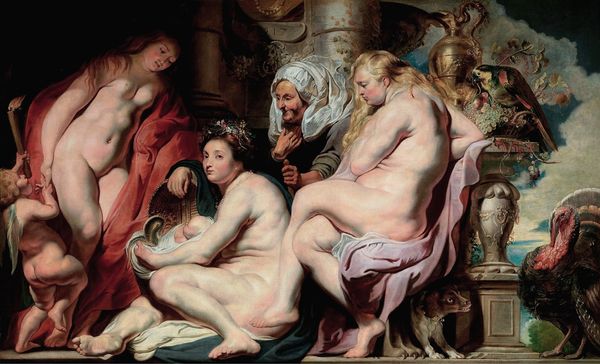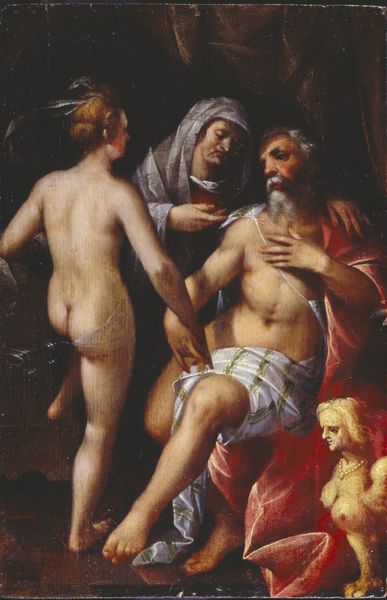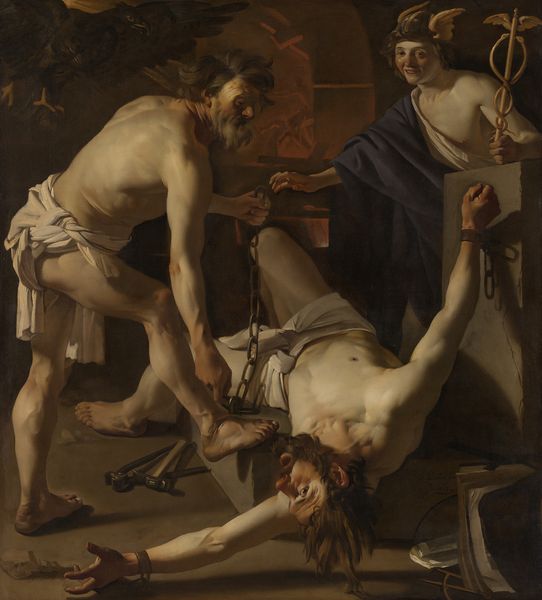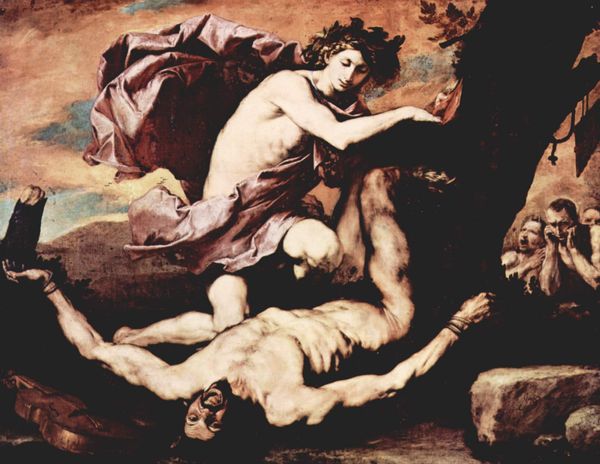
painting
#
baroque
#
painting
#
figuration
#
roman-mythology
#
dark image
#
mythology
#
human
#
history-painting
#
italian-renaissance
#
nude
#
expressionist
#
erotic-art
#
realism
Dimensions: 185 x 229 cm
Copyright: Public domain
Jusepe de Ribera painted this ‘Drunken Silenus’ sometime in the first half of the 17th century, using oil on canvas. The oil paint, applied in layers, gives a rich depth to the forms, and Ribera masterfully manipulates light and shadow. Consider how he uses the inherent qualities of the oil paint to create a palpable sense of texture and volume, particularly in the rendering of flesh, cloth, and leaves. Ribera employed techniques common to the period, building up the image through successive glazes, allowing for a high degree of realism and expressive potential. The large canvas reflects the tradition of monumental painting, engaging with the status and power of the Catholic church at the time. The labor involved in the production of such a painting – from grinding pigments to stretching the canvas – speaks to the skilled craftsmanship of Ribera and his workshop. By looking closely at the materials, processes, and social context, we gain a deeper understanding of the rich visual experience of this painting, and challenge conventional distinctions between fine art and craft.
Comments
No comments
Be the first to comment and join the conversation on the ultimate creative platform.
